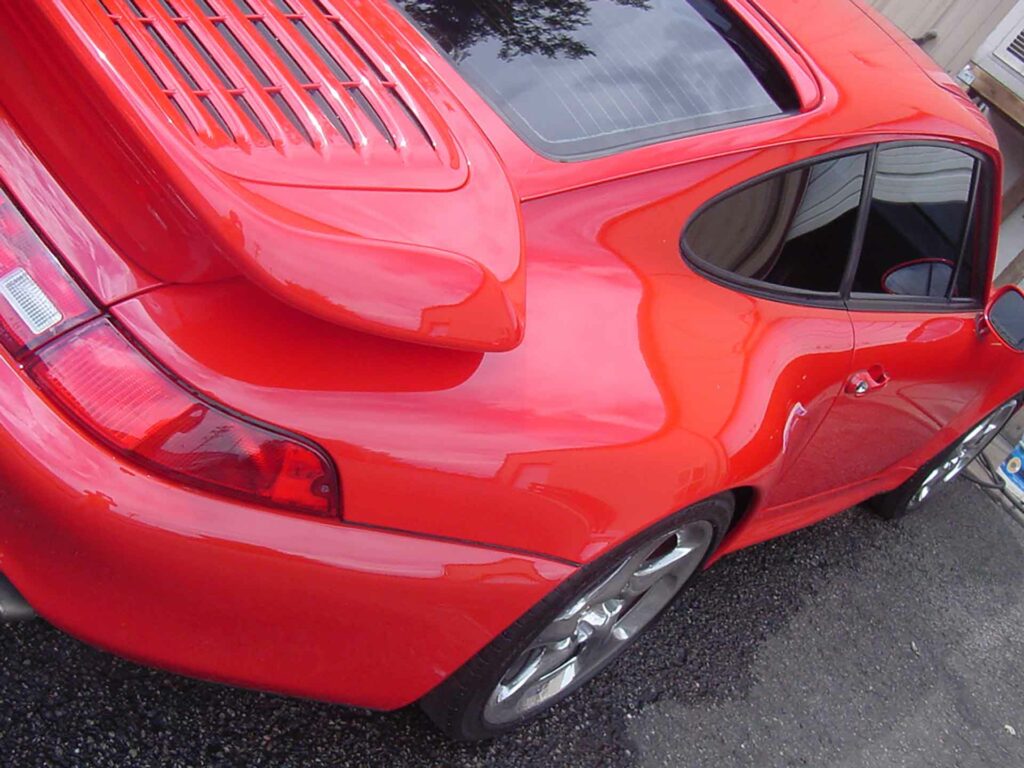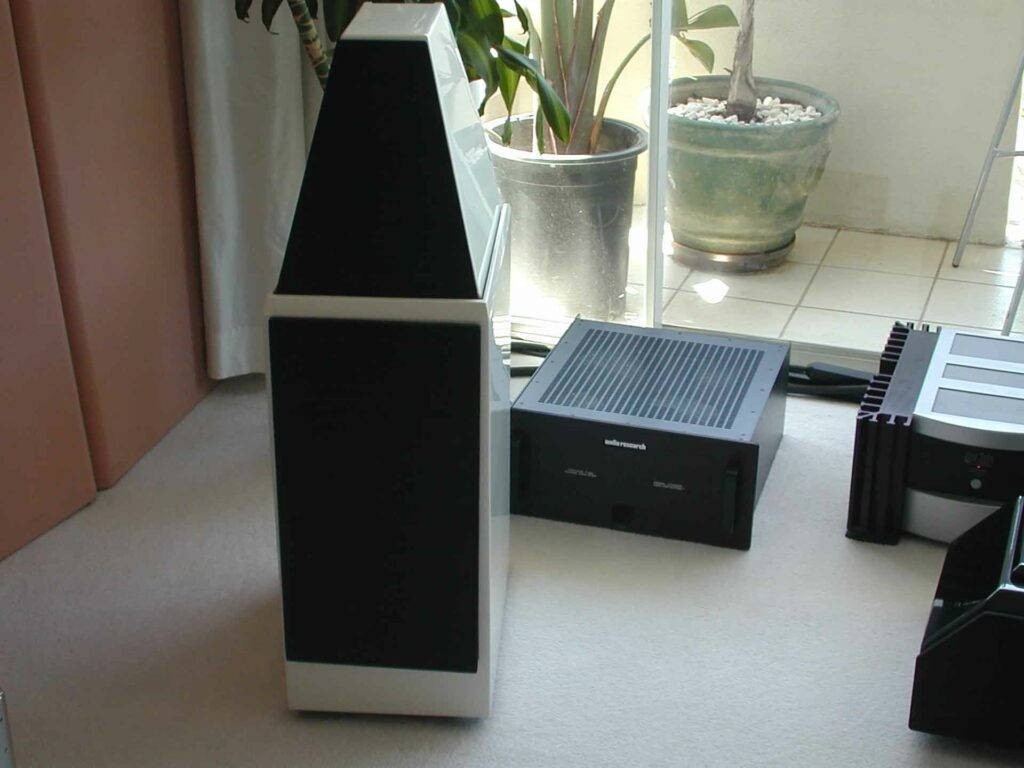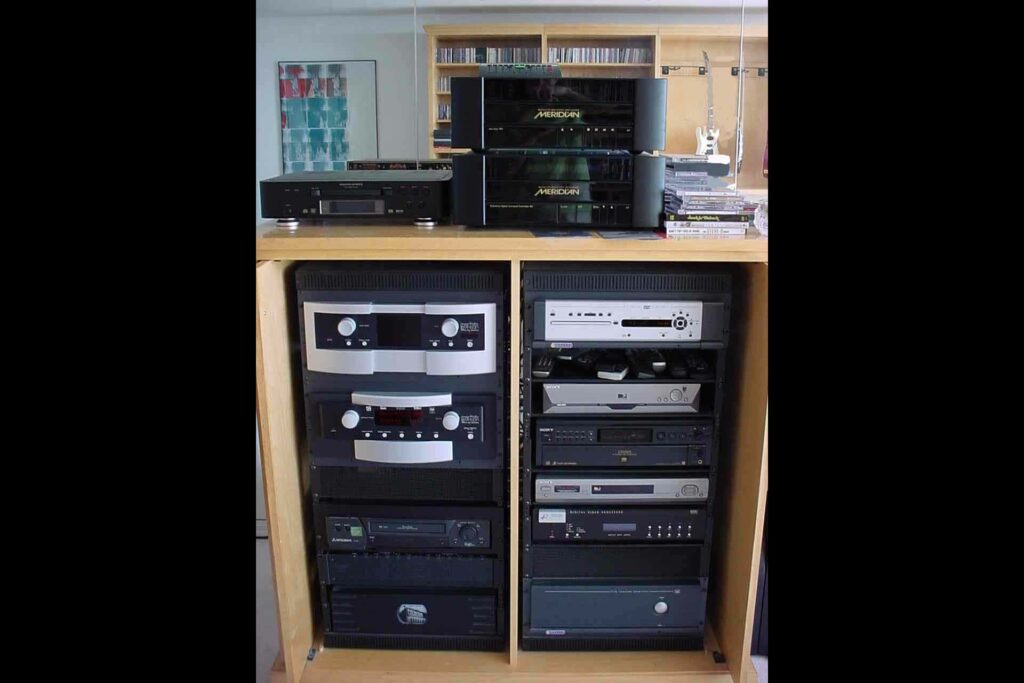Watching the Internet come to life as a commercial entity in the 1990s, when I was in music/business school, was most eye opening. From the time that I got to South Central Los Angeles to celebrate the pending West Coast hip-hop stardom of Snoop, Dr Dre, and others, as well as watching my first movie get made (Forrest Gump – including fake rain), I had a feeling we were living in special times. During the four years I spent at USC, the Internet went from a quirky network “invented by Al Gore” to a concept with enough promise for me to bet my entire early career on. Forget high-school dreams of being a Hollywood record producer; this Interwebs thing seemed like a bigger deal than that… and it was.
The gig I had at Mr. Mark Levinson’s Cello Music and Film Los Angeles selling the world’s most expensive and exotic gear (with a borderline cult-like following) was without question the road more traveled career-wise. I was making solidly six-figure money working part-time in college, which should have single-handedly kept Tower Records from pending bankruptcy. A full-time gig in sales at Cello could mean a few hundred grand per year right out of college without reinventing myself. So of course, I resigned from Cello in the spring of 1996 to take a black and white Apple MacBook 520b laptop with a 9600 baud dial-up modem, along with $11,000 in Cello commissions, to start an audio magazine online. When I tell you that I was clueless at the time, I am being polite. Nobody had gone down this road before in that era and with my overhead low thanks to college and opportunity everywhere why not, right? Before this era, if you wanted to own a media property, you needed a lot of money to get into the game. In the late 1990s, any schmuck could get in on the party, me included.
Getting the new publication off the ground was predictably tough. Companies who I had made lots of money selling at Cello (Theta Digital, I am talking about you) wanted me back where they could understand and exploit me – not off on some Internet quest. Others, such as DTS, Harman, and Transparent Audio supported me in my bat-shit-insane new venture. A few years down the road, things were going pretty well. I had a small, shared office in a swanky Century City building with a great view, as well as a modest full-time staff. I drove a concours-winning, Guard’s Red with Cashmere 1995 Porsche 911. And ultimately, I would buy a tiny condo in a very famous, full-service building above The Sunset Strip in Shoreham Towers.

The condo was constructed in the mid-1960s and was a tower built into the side of the Santa Monica Mountains. My corner unit on the fourth floor was a mere 800 square feet, which was basically two rooms, plus a small kitchen, a pretty modest bathroom, and a tight walk-in closet. While I didn’t have to store my pots in the Viking oven, the unit was pretty damn small. We only had dialup Internet. That was how it was back in the very late 1990s. The rock-and-roll history at Shoreham Towers was epic, too. People who lived there (or used to ) included: Jimi Hendrix, Axl Rose, Billy Idol, and many others. My next-door neighbor was 1950s crooner Neil Sedaka, who didn’t really have an appreciation for my loud-bad guitar style or my gigantic stereo system. Go figure.
As a young man with relatively low overhead and a pretty good cash flow, I was able to build out the audio/video system of my dreams. I had money but little sense back then. One of my big mistakes was to build my own custom furniture. Not that custom furniture was a bad thing – it wasn’t – it was the scale of it. I built floor-to-ceiling bookcases with wine, book, and CD storage. On the other side of the room, I had a half-height cabinet on wheels that housed my audiophile and home theater gear. I didn’t pop for a $15,000 42-inch plasma (non-HD),which might have actually been smart in retrospect. What I did (go big or go home) was to put a seven-inch CRT Sony projector on the ceiling and run a 100-inch Stewart Filmscreen on a motorized drop-down system in the new ceiling. What was I thinking?
Compounded mistakes at my condo followed soon thereafter. One of the most obvious being my obsessive collection of ultra-premium audio and home theater gear of the era. Just because I could have access to the three best (Mark Levinson, Krell, and Meridian) AV preamps on the market – did I have to own them all? It turns out I did. Audiophile power amps? The biggest Mark Levinson 400-watt stereo amp was lots of power, but it needed to be flanked by a pair of 600-watt Audio Research monoblocks too because you never know when you wanted to listen to tubes. Wilson WATT Puppy loudspeakers looked gorgeous in Audi Pearl white and had a matching center speaker, but when all was said and done, I had too much gear in my tiny-ass condo. Could I not return any of their products after review?
Years later and to this day, I am sick over having sold that condo. I paid $220,000 for it with 10 percent down, which seemed like all the money in the world at the time. By modern standards, the payment was so low (including HOAs) that the fact that I only doubled my money in three years owning it made selling it, in retrospect, look very foolish. Today, units like mine in Shoreham Towers sell for $1,000,000 plus and rent for over $8,500 per month. At that age, I knew little to nothing, nor could I see the sale of AVRev.com in 2008 that would have easily allowed me to keep the place. It is easy to Monday-morning quarterback these decisions.

The issue of owning so much audiophile gear is one that I’ve been thinking about more and more recently. I consider myself to be very blessed to have had the opportunity to own so many of the best products from the top brands in the AV world – not just then but every day until today. But why was I hoarding so many fancy components back then? Who the hell was I trying to impress? I knew what I had and I liked it. Was anybody coming over to see or judge my system? Perhaps some industry people stopped by before going out to a business dinner in Hollywood or Beverly Hills, and that was fun, but who really cared if I had an extra set of A-list tube monoblock amps? I thought people did but they absolutely didn’t.

Insecurity is sadly a thread well woven into the audiophile hobby over the past few decades. The print magazines of the past have made an entire generation feel like if they weren’t constantly chasing the audiophile dragon that they were somehow being left behind. The often-manipulative copy in these old-school magazines suggested that if you didn’t buy into their often voodoo-like ways that somehow you wouldn’t be allowed into their secretive audiophile club. That’s garbage. Do you like your stereo system? Then your system is good. Do you want to upgrade your system from time to time? You should be encouraged to do just that whenever you feel like it and your checking account will allow for it, but only on your terms. You should never feel pressure to upgrade just to keep up with the Jones’ audiophile style. Never.
CBS Morning News has a segment that they do with notable people every few months, which is a Letter to One’s Younger Self. If I were able to talk to my younger self, or more importantly talk to today’s music-loving and tech-savvy youth, I would suggest that the end game isn’t the point. There is no race to getting to the biggest-badest system. Where the fun comes from is the journey from your first system and every move on the audiophile chess board past that. Find that component that costs one-third the price but performs better, and enjoy the hell out of it. Invest in that splurge product and never forget how lucky you are to have such a wonderful luxury product in your life for however long it is in your rig.
In the end, this hobby is about fun. Not ego or status. For the hundreds of thousands of burgeoning Generation Z audiophiles rocking their first pair of good Bluetooth headphones, this is a key lesson, because you likely soon will be able to invest in more and larger audiophile systems and configurations. My hope is for you to enjoy each and every step along the way, because this hobby is about fun and lifestyle benefits. In an overly connected world, taking 15 minutes to listen to some John Coltrane can be just what the doctor ordered for balance, relaxation, and happiness.




Well, Jerry, as they say, the first step toward recovery is realizing you have a problem 😉 As personal foibles go, your youthful addiction seems pretty benign, as long as your pocketbook can sustain it.
But what’s sad to me is that there was no way for those phenomenal systems of your youth (all of them still phenomenal) to perform anywhere near their potential in an 800 square foot apartment.
I write this from 39,000 feet on a United Dreamliner back to LA as I was on a 36 hour trip to Toronto to get some of my old clients back. I am still bat-shit crazy, I fear. 🙂
Thanks for your comments and kind words.
The idea that one would own MORE THAN ONE A-list AV product is also INSANE.
The sound in that room was better than you might have expected. I had some RPG treatments (of course, I did) that helped. NOT upgrading my windows was a terrible mistake for outside sound, heat-cooling and more. I ran out of money for Fleetwood windows. I should have sold a preamp to get them as I was miserable without them.
Wilsons could image like a MF when you toed them in. Revel Sub30 was amazing too. Bob Hodas set the room up with EQ. It was pretty F-ing good – especially for a kid.
Funny thing is that I saw some awards that I PRINTED MYSELF (20 years ago) today at Paradigm. Crazy. That was that era.
I hope you are digging the new publication.
j
Fortunately for me this has never been an issue. But it does take no small amount of self control to not let audio press make me feel like a loser just because I’ve never owned a tube amp, or certain brands of speakers, or whatever they are writing about at the moment.
Learning to love what you have and instead invest your time into listening to music on your system is where we should all be in this journey.